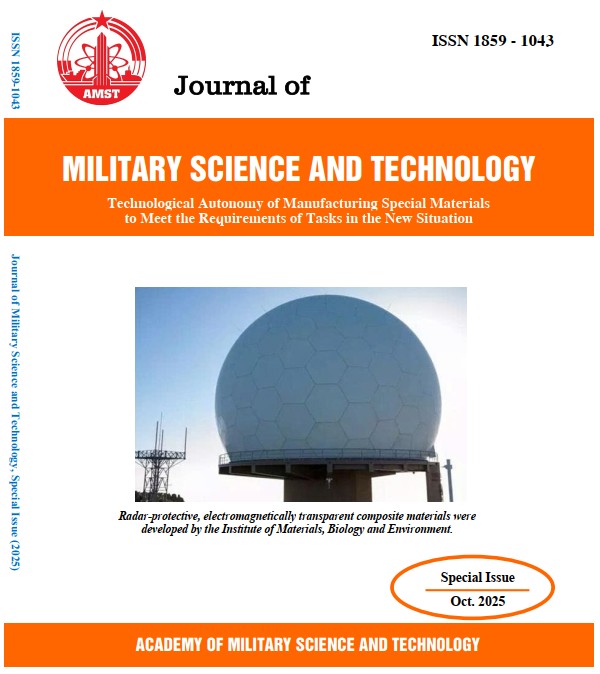Fabrication of CeO2 based materials by microwave assisted combustion synthesis for treatment of exhaust gas from plastic waste pyrolysis
77 viewsDOI:
https://doi.org/10.54939/1859-1043.j.mst.IMBE.2025.22-28Keywords:
Plastic waste pyrolysis; Exhaust gas treatment; CeO2 based catalyst.Abstract
This study presents the synthesis and performance evaluation of CeO₂-based catalysts for the treatment of exhaust gases generated from plastic waste pyrolysis. The catalysts were successfully prepared via a microwave-assisted combustion synthesis method, enabling rapid production of fine powders with high homogeneity. X-ray diffraction (XRD) analysis confirmed the formation of crystalline CeO₂ as the dominant phase, while scanning electron microscopy (SEM) revealed a porous microstructure, favorable for catalytic applications due to its high surface area and accessible active sites. Catalytic activity was assessed by monitoring the composition of pyrolysis exhaust gases before and after treatment, in accordance with the Vietnamese national emission standard QCVN 30:2012/BTNMT. The results demonstrated that CeO₂-based catalysts exhibited excellent removal efficiencies for hazardous gaseous species, including carbon monoxide (CO), nitrogen oxides (NOₓ), hydrogen chloride (HCl), sulfur oxides (SOₓ), and light hydrocarbons, particularly at elevated operating temperatures. Incorporation of a small proportion of noble metal significantly enhanced low-temperature activity, enabling efficient pollutant removal under milder conditions. Post-treatment measurements indicated that all regulated emissions were reduced to concentrations below the prescribed limits.
References
[1]. Tariq Maqsood et al., “Pyrolysis of plastic species: A review of resources and products” J. of Analytical and Applied Pyrolysis, Vol. 159, pp. 105295, (2021). DOI: https://doi.org/10.1016/j.jaap.2021.105295
[2]. Vineet Kumar Soni et al., “Thermochemical Recycling of Waste Plastics by Pyrolysis: A Review” Energy Fuels, Vol. 35, pp. 12763-12808, (2021). DOI: https://doi.org/10.1021/acs.energyfuels.1c01292
[3]. Hamad Hussain Shah et al., “A review on gasification and pyrolysis of waste plastics” Frontiers in Chemistry, 10:960894 (2023). DOI: https://doi.org/10.3389/fchem.2022.960894
[4]. Mohaoyang Chen et al., “The Catalytic Mechanisms and Design Strategies of Noble Metal Catalysts for Selective Reduction of NOx with CO” The European Society Journal for Catalysis, Vol. 16, e202400323 (2024). DOI: https://doi.org/10.1002/cctc.202400323
[5]. Ying Du et al., “Recent advance of CuO-CeO2 catalysts for catalytic elimination of CO and NO” Journal of Environmental Chemical Engineering, Vol. 9, pp. 106372 (2021). DOI: https://doi.org/10.1016/j.jece.2021.106372
[6]. Shuyi Liu et al., “Catalytic CO oxidation on CeO2-based materials: Modification strategies, structure-performance relationships, challenges and prospects” Separation and Purification Technology, Vol. 359, pp. 130556 (2025). DOI: https://doi.org/10.1016/j.seppur.2024.130556
[7]. Lei Nie et al., “Activation of surface lattice oxygen in single-atom Pt/CeO2 for low-temperature CO oxidation” Science, Vol. 358, pp. 1419-1423 (2017). DOI: https://doi.org/10.1126/science.aao2109







